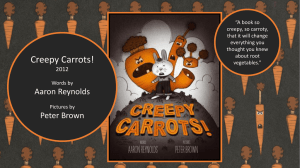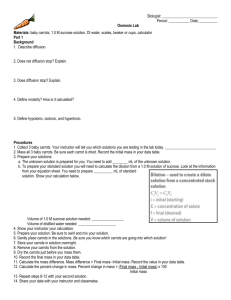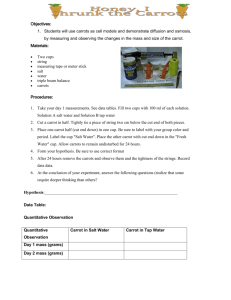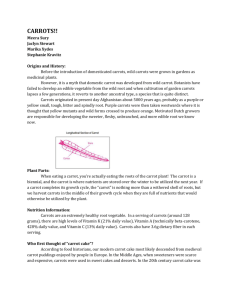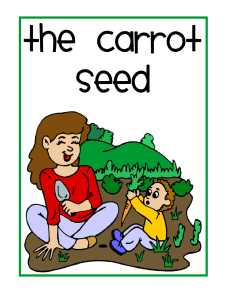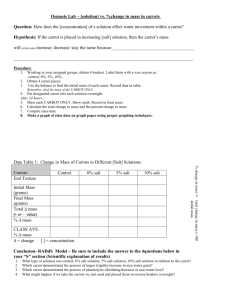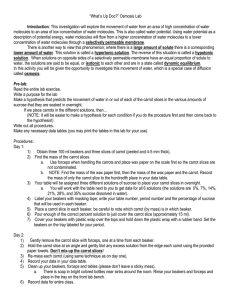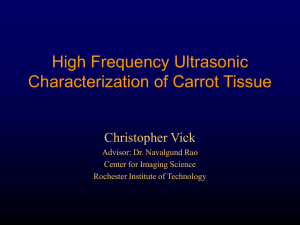Lesson plan - Captain Planet Foundation
advertisement
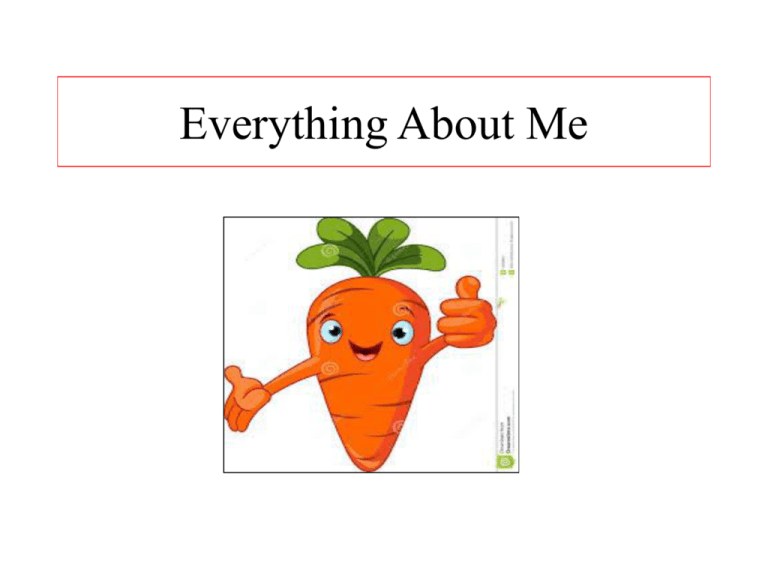
Everything About Me Where Am I from? • It’s said that we originated from wild roots that grew in Afghanistan which were red, black or purple in color. It’s also thought that our ancestor was a small, tough, pale-fleshed taprooted plant which grew in the Near East and Middle Asia. Whatever the truth, we’re definitely an ancient plant. Our seed has been found in lake dwellings in central Switzerland dated at 2000 to 3000 BC. We were probably used for both food and medicinal purposes in the beginning. • In the 17th century an orange coloured carrot was developed in Holland and further breeding occurred throughout the 18th century. How can I grow? Carrots are best grown in the open ground, but you can try short-rooted types in containers or grow bags. Drought resistant, carrots like hot weather, seldom needing water. If they start wilting, give a thorough soaking of water every 10-14 days. Keep weeds down between rows by hand weeding if you allow weeds to grow they may end up crowding out the carrots. Be careful when weeding or thinning that you don’t crush the foliage, as the smell attracts carrot fly (a pest). When to plan/harvest me? • • • • We’re available all year round but at our best value from March to August. We need deep, sandy soil, plenty of water and a temperate or cool climate. If we’re grown in soil that has a lot of animal manure it will cause us to fork and become hairy. Sown from seeds we’re planted in rows, not too deeply, and kept moist. When immature we have a pale white/yellow appearance that gradually changes to a deep orange colour as we mature. Carrots are ready for harvesting about 12-16 weeks after sowing. Harvest carrots as soon as they are large enough to use; don't aim for the largest roots or you'll sacrifice flavour. Lift carefully using a fork if the soil is heavy. Nutritional information Carrots are rich in anti-oxidants, vitamins and dietary fiber. They provide only 41 calories per 100 g, negligible amount of fat and no cholesterol. They are exceptionally rich source of carotenes and vitamin. Carotenes are converted into vitamin A in the liver. Betacarotene is the major carotene that is present in these roots. Beta carotene is one of the powerful natural anti-oxidant helps protect body from harmful oxygen-free radical injury. Nutritional information • Fresh roots are also good in vitamin C; provide about 9% of RDA. Vitamin C is water soluble anti-oxidant. It helps the body maintain healthy connective tissue, teeth and gum. Its anti-oxidant property helps the body protect from diseases and cancers by scavenging harmful free radicals. • In addition, this root vegetable is especially rich in many Bcomplex groups of vitamins such as folic acid, vitamin B-6 (pyridoxine), thiamin, pantothenic acid. • Further, They also compose healthy levels of minerals like copper, calcium, potassium, manganese and phosphorus. What can I do for you? • Improve vision especially at night, skin health, and normal growth because of our very high level of vitamin A (carotene). • We’re sweetly delicious whether we’re old or young because we have some natural sugars, but younger carrots have more folate, one of the B vitamins which may help prevent birth defects in babies. • We’re a really good source of dietary fibre, which is good for the health of your digestive system. Fun facts and silly things In early Celtic literature, the carrot was referred to as the "Honey Underground"! Carrot was one of the earliest vegetables grown by man. Carrot is related to parsley. Don’t you think that their feathery green tops look somewhat like parsley? In the past their leaves were used to decorate the hats of royalty. Ed Ruscha, who is a master printer and artist uses carrot juice instead of printer ink.

